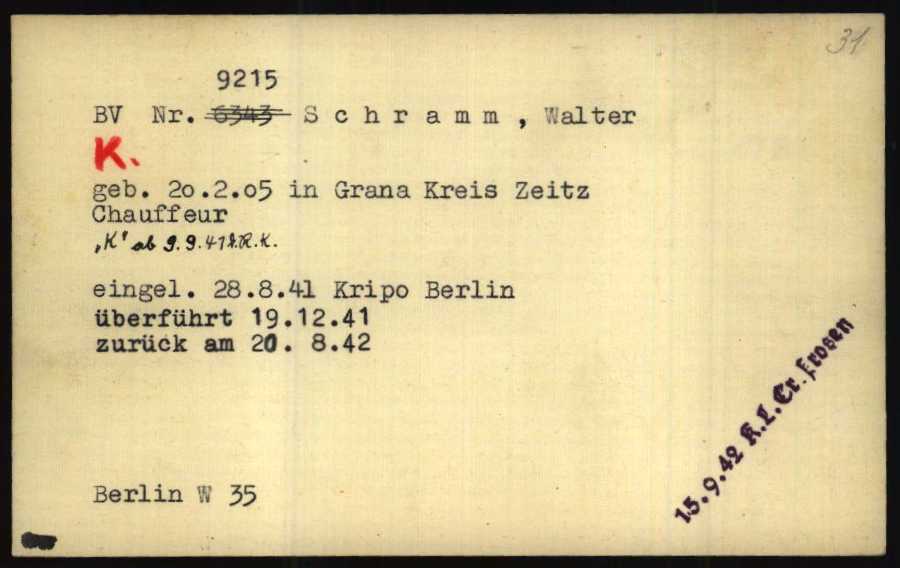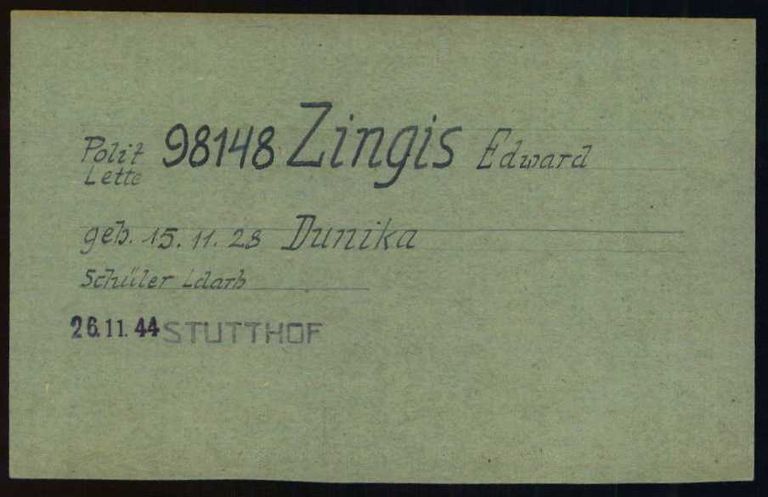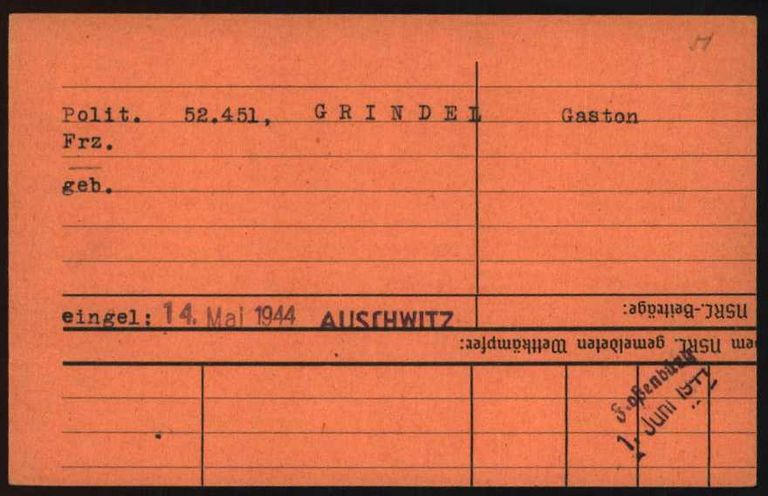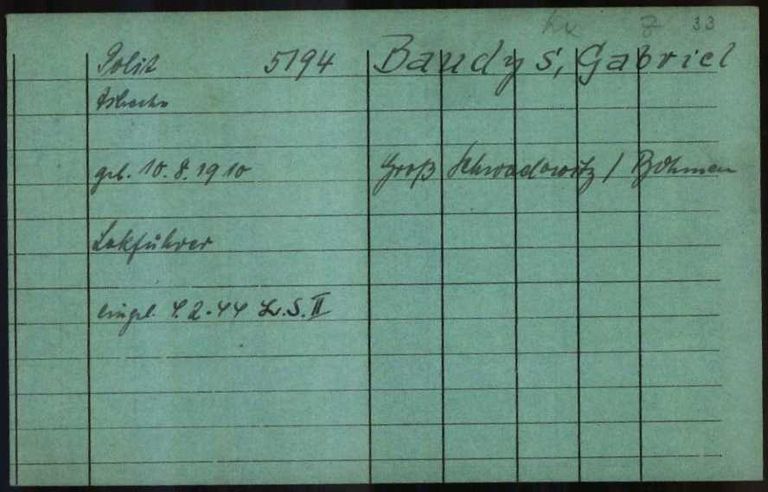Page of
Page/
- Reference
- Intro


This document is a registry office card from Buchenwald concentration camp. These registry office cards were written on file cards following a specific template. This is why the registry office cards from Buchenwald all look very similar, regardless of the prisoner’s category or nationality.
This document is a registry office card from Buchenwald concentration camp. These registry office cards were written on file cards following a specific template. This is why the registry office cards from Buchenwald all look very similar, regardless of the prisoner’s category or nationality.
Questions and answers
-
Where was the document used and who created it?
Whenever a prisoner arrived at a concentration camp, their personal details were recorded on multiple file cards. First an arrivals form was filled out. After the information had been checked against the personal effects storage room questionnaire, it was copied to a registry office card. There was no printed form for this, which is why the registry office cards looked different in each concentration camp. In the registry office of Buchenwald, the information was always copied by prisoner clerks onto a blank, rectangular file card following the same template.
Eugen Kogon, who worked as a prisoner clerk in Buchenwald, listed the responsibilities of the registry office in his book The Theory and Practice of Hell: “It took care of all internal camp administration – files, assignment to barracks, preparation for roll call, ration distribution, and the like. It was an institution of great importance to a camp” (Kogon, Theory and Practice of Hell, translated by Heinz Norden, New York 1950, p. 55). File cards were kept in the registry office in order to manage these tasks.
- When was the document used?
The registry office card file was used during the entire existence of Buchenwald concentration camp. It was started when the first transport of prisoners arrived in July 1937, and it continued to be updated until shortly before the liberation in 1945. There was a small change in March 1942, when the newly established labor assignment department began using its own card file to manage prisoner labor details. From this point on, the labor detail to which a prisoner was assigned was no longer listed on the back of the registry office cards.
- What was the document used for?
Based on these cards, the registry office produced daily reports on the total number of prisoners (strength report) and on how many prisoners had arrived in the camp or had been transferred to other camps or labor details (change report). In the registry office, newcomers were also assigned to a block in which they were housed. The block number was recorded on this card as well. Until 1942, the prisoner’s labor detail and first day of work were also noted on the back of the registry office card. This made it possible to keep track of all central camp processes on one card.
Even if a prisoner died, was released or transferred to another concentration camp or prison, the card remained in the registry office. It was probably re-sorted, however, because the registry office card file in Buchenwald was apparently divided into three sections. There was one card file for prisoners who had died in the camp and a second card file for prisoners who had been released or transferred to another concentration camp or prison and therefore were no longer under the administrative authority of Buchenwald. The registry office cards of current prisoners were kept in a third card file. According to an overview from an UNRRA District Office from 1946, this last card file was further divided by nationality; the individual sections were then alphabetically ordered. This organization made it relatively easy to determine how many prisoners of each nationality were in the Buchenwald concentration camp at any given time. However, other sources report that this third card file was organized by prisoner category. This would have made it possible for the registry office to quickly report how many prisoners in each category were held in the concentration camp.
- How common is the document?
Registry office cards were created in Buchenwald for each male newcomer, but they have not been preserved for all prisoners. For the female prisoners in the sub-camps co-administered by Buchenwald, no registry office cards have been preserved at all.
- What should be considered when working with the document?
Looking at the registry office cards, it would appear that registration was an orderly process in the concentration camps. But particularly when large mass transports arrived, people would be admitted to the camp hastily while being beaten and abused. In general, the SS and the Gestapo used the arrival procedure as a demonstration of their own strength. For this reason, many prisoners recall insults, violence and harassment during registration.
If you have any additional information about this document or any other documents described in the e-Guide, we would appreciate it very much if you could send your feedback to eguide@arolsen-archives.org. The document descriptions are updated regularly – and the best way for us to do this is by incorporating the knowledge you share with us
Help for documents
About the scan of this document <br> Markings on scan <br> Questions and answers about the document <br> More sample cards <br> Variants of the document





